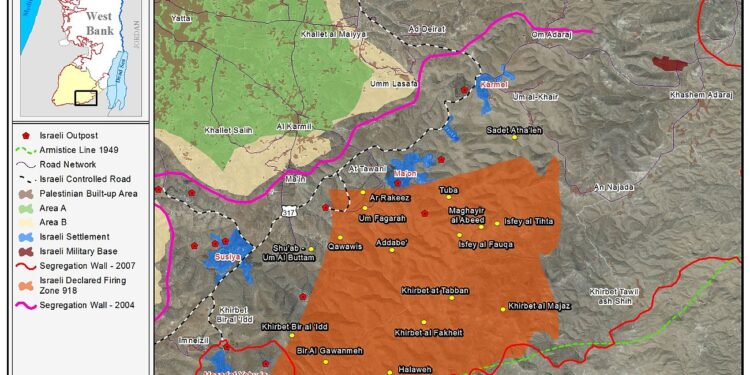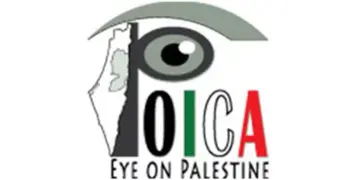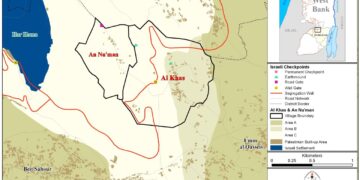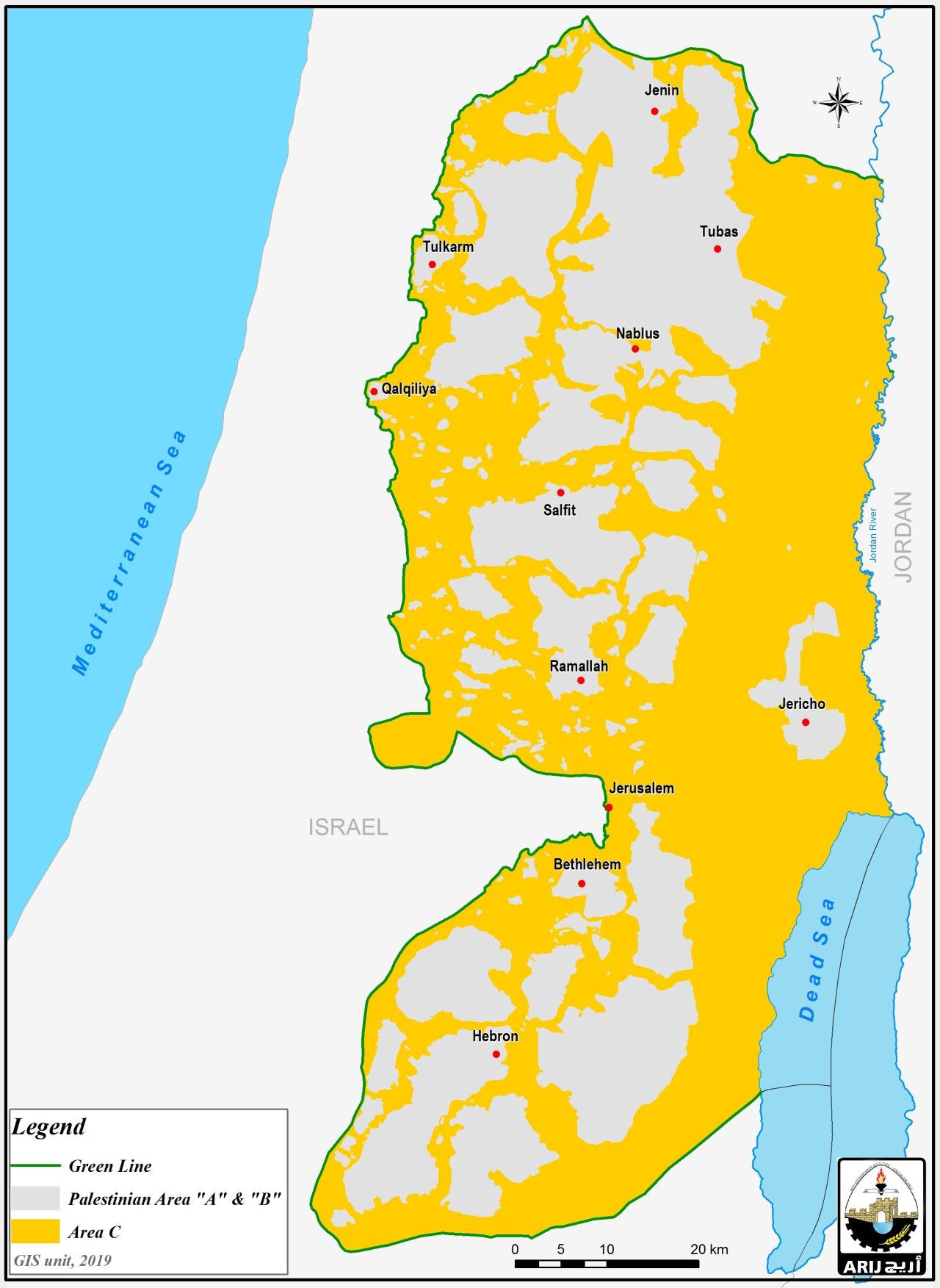Introduction:
Since its occupation of the West Bank in 1967, Israel has pursued a long-term policy aimed at minimizing Palestinian presence in Area “C”, which constitutes approximately 61% of the West Bank. Under various pretexts ranging from “improving residents’ quality of life” to “security” or “environmental concerns,” the Israeli occupation authorities seek full control over these areas through legal and military tools that collectively create a coercive environment pushing Palestinians to leave.
General Context:
Area “C” contains hundreds of Palestinian population communities that largely rely on agriculture and livestock herding. Instead of developing or supporting these communities, they are subjected to severe restrictions, including bans on construction, denial of basic infrastructure such as electricity, water, and roads, as well as deprivation of education and healthcare. Israel enforces harsh military restrictions in these areas by declaring vast tracts as military training zones, nature reserves, or state land designations that allow Israeli authorities to limit Palestinians’ movement and confiscate their land.
The Legal System as a Tool for Displacement:
The “Civil Administration” of the Israeli army has deployed new legal instruments permitting the immediate demolition of any Palestinian structure on the pretext of lacking permits despite the fact that obtaining such permits in Area “C” is virtually impossible. The administration’s deliberate refusal to issue structural plans for Palestinian villages entrenches the classification of structures as “illegal,” thus paving the way for demolition and rejection of development applications. In this context, approximately 7,000 Palestinian homes and structures have been demolished in Area “C” over the past decade alone, in blatant violation of Article 53 of the Fourth Geneva Convention, which prohibits widespread destruction of property in occupied territories.
Settlements at the Core of Israeli Policy:
In parallel with the erosion of Palestinian life in Area “C,” Israel is accelerating settlement expansion. This is evident in the establishment of unauthorized settler outposts and the provision of military protection for them, gradually transforming them into official settlements. Since October 2023, around 70 new outposts have been established, reflecting clear political backing for this trend.
South Hebron Hills and Masafer Yatta as a Case Study:
The Masafer Yatta area in the southern Hebron Hills is one of the most targeted regions by displacement policies. Around 4,000 Palestinians live in approximately 30 Bedouin communities threatened with expulsion under the pretext that the area has been designated for military training. In 1999, the Israeli army previously expelled residents, before the Israeli courts temporarily allowed them to return. However, the threat of expulsion remains pending a final court decision.
Villages and Communities of Masafer Yatta:
| Khirbet Khushm al-Karm | Al-Hamra | Sada al-Thala | Al-Jawaya | Al-Tuwani |
| Mughayyir al-‘Abid | Al-Najada | Khillat al-Dab‘ | Qawawees | Susiya |
| Ma’in Community | Al-Tuban | Sha‘b al-Batin | Umm Tuba | Jinba |
| Khirbet al-Maqfara | Al-Majaz | Umm al-Kheir | Al-Rakeez | Simrah |
| Arab al-Zuwaidīn | Al-Fakheet | Saffi al-Fuqa | Bi’r al-‘Idd | Halawa |
| Khirbet Sarurah | Al-Markaaz | Saffi al-Tahta | Al-Daqiqa | Khushm al-Daraj |
These communities are completely deprived of basic infrastructure, while Israeli authorities refuse to provide any services or recognize them legally. Most of these villages are denied the right to develop structural plans, while nearby settlements enjoy full support and services.
Settler Violence and Tools of Coercion:
Recent years have witnessed a sharp rise in settler violence against Palestinian residents in Area “C.” These attacks now go beyond property destruction or intimidation, extending to lethal violence. A notable example is the case in the village of Umm al-Kheir in Masafer Yatta, where a settler shot and killed Palestinian citizen ‘Odeh al-Hathalin during a protest against an Israeli bulldozing operation benefiting settlers. The Israeli court later released the settler under house arrest, despite his documented record of repeated assaults.
Martyr ‘Odeh al-Hathalin became the 29th Palestinian killed by settler gunfire in the West Bank since October 7, 2023, a dangerous indicator of settler impunity and the complicity of the Israeli judicial system.
The situation in Area “C” cannot be viewed as isolated incidents but rather as part of a systematic policy aimed at depopulating the land in preparation for its eventual de facto and de jure annexation under future Israeli-imposed arrangements. The denial of development rights, imposition of a suffocating living environment, widespread demolitions, and unchecked settler violence are all tools in the battle for geographic and demographic control.
Accordingly, the Following Actions Are Required:
First: On the Palestinian National Level:
- Strengthen official Palestinian institutional presence in Area “C,” particularly in displacement-threatened areas like Masafer Yatta, by supporting and empowering local councils to deliver essential services.
- Expand documentation and media campaigns to expose violations and strategically present them to global public opinion.
- Develop community resilience strategies, including (temporary) infrastructure projects, agricultural support, community-based education, and healthcare services.
Second: On the International Level:
- Urge the United Nations, the European Union, and international human rights organizations to send permanent fact-finding missions to Area “C,” especially to high-risk zones like Masafer Yatta.
- Activate international legal instruments to hold Israel accountable for its grave violations, and recognize the policies of forced displacement and spatial apartheid as war crimes.
- Support Palestinian efforts to bring cases before the International Criminal Court regarding settlement crimes and premeditated killings by settlers.
- Direct international funding to support development and investment projects that promote Palestinian permanence on their land.
In Summary:
Area “C” constitutes a central battleground in the Israeli-Palestinian conflict and summarizes the core of Israel’s strategy of depopulation and annexation. What is happening in Masafer Yatta and Umm al-Kheir is only one example of the threats facing hundreds of Palestinian communities. What is urgently needed, now more than ever, is a unified Palestinian stance, supported by an international legal and political front, to stop this ongoing crime against land and people.
Prepared by:
The Applied Research Institute – Jerusalem












